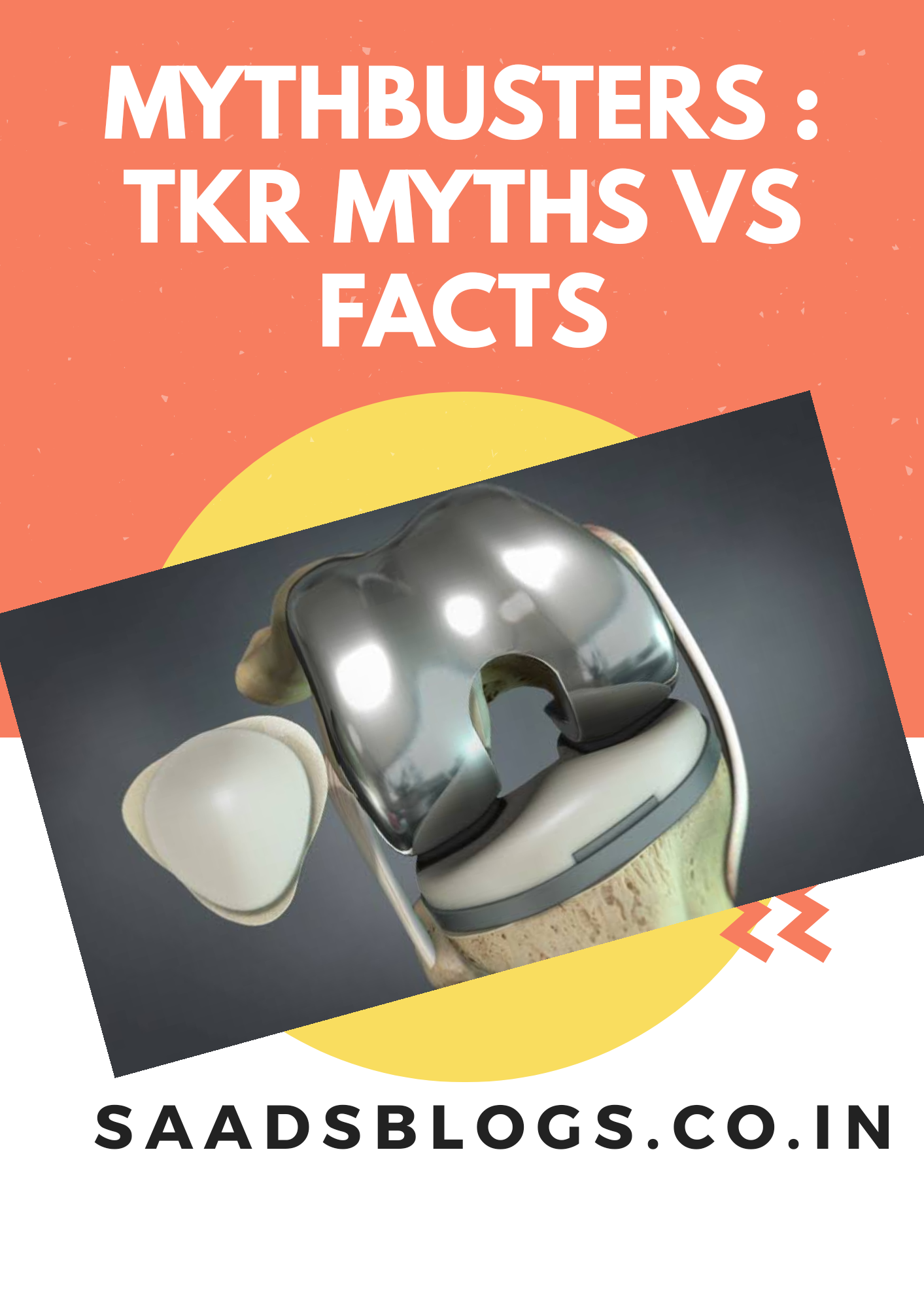Myth busters part -2 : Total Knee Replacement Myths vs facts.
Mythbuster part – 2 : Total knee replacement myths vs facts.
Myth#1. Gene therapy for osteoarthritis of knee.
Fact – Still this study is at animal level. The main concern is the high immunogenicity of certain viral vectors. Retroviral vectors integrate into the chromosomes of the cells they infect. There will be always a chance of integrating into a tumor suppressor gene or an oncogene, leading to virulent transformation of the cell.
Myth#2. Alternative therapies such as braces, oils acupressure, ozone treatment, massage beds, laser therapy, magnetic therapy, will cure advanced arthritis and knee pain.
Fact – There is no scientifically proven permanent nonsurgical cure for advanced knee arthritis to date and these alternative therapies are not backed by established scientific data. All these modalities may provide temporary relief in early to moderate arthritis for some duration but they are not curative.
Myth#3. Knee replacement is a very painful surgery. There is a lot of pain in post operative period.
Fact – Modern-day pain management, with multimodal approach, ensures that the patient does not feel any pain during surgery or in the postoperative period and has a smooth recovery.
Myth#4. “I should wait as long as possible to undergo knee replacement surgery”
Fact – It is not required to wait for the surgery until the pain becomes intolerable. However, longer life of joint replacements enables people to consider surgery even at a younger age (if required). Osteoarthritis is a degenerative disease that continues to damage the joint surface and deform the shape of bones around the knees. Unnecessarily waiting for surgery and delaying it, is technically more challenging for the surgeon and it causes patients’ health to deteriorate over time and increases the likelihood of surgery-related complications.
Myth#5. “I should continue with medications as long as possible and avoid knee replacement surgery.”
Fact – Medicines including painkillers just give symptomatic relief for a temporary duration and prolonged usage is riddled with serious side effects such as renal failure, peptic ulceration etc. People with advanced arthritis definitely require surgery and cannot be cured by medicines.
Myth#6. “I’m too old for surgery”
Fact – Age is not a contraindication for surgery. If clinically fit, elderly patients regularly can also get knee replacement surgery done.
Myth#7. Driving is not possible after Knee replacement.
Fact – Driving is a lot easier after knee replacement. Most patients start driving within 6-8 weeks of surgery.
Myth#8. After knee replacement, I’ll have to give up some activities and sports.
Fact – You have a high probability of getting back to activities like brisk walking or cycling in 6 to 12 weeks. However, it is better to avoid contact games, Squatting, and sitting cross-legged is possible but should be kept to minimal in order to have a longer life of the implant.
Myth#8. After a knee replacement, it takes months to recover.
Fact – After 24-48 hours of surgery, patients become independent for toilet activities. Weight-bearing is tolerated and knee bending is permitted by this time. At around 3 weeks patients can participate in outdoor social activities. The majority of patients can resume their Job at 6 weeks of surgery.
Myth#9. Knee replacement is done “one at a time”.
Fact – If the patient does not have significant co-morbidities and is deemed fit to undergo the procedure; then both knees can be replaced in the same sitting.
Myth#10. The new knee implants will last for 10 yrs. only.
Fact – With modern-day precision including computer-assisted knee replacement and advancement in biomaterials, the survivorship has increased considerably. Today’s joint replacements last 20- 25 years or longer. For many people, it will last the remaining lifetime.
Myth#11. “I am obese, I cannot undergo Knee replacement surgery.”
Fact – Knee replacement can be successfully done in an obese patient as well. Literature shows comparable results when compared to average weight people, although requires more expertise and some special techniques during surgery. Sometimes patients keep on waiting in the hope of reducing weight before the surgery is done. In fact, with a painful arthritic joint, it is very difficult to lose weight as the patient is less mobile. On the contrary, many of our patients actually lost weight after surgery as they were able to participate in brisk walking and exercise programs after knee replacement.
Myth#12. “I have Diabetes or Hypertension or Heart Ailment, so I cannot undergo knee replacement surgery.”
Fact – Diabetic, Hypertension, and Heart ailments are no longer a bar for surgery. A detailed preoperative check-up is done to check fitness.
Myth#13. “I can choose my implant by searching Google.”
Fact – There are various designs of implants available with good long term results. Different surgeons are comfortable with different implant designs and instrumentation. So, it is better to choose a surgeon & leave it upon him to choose an implant for you.
Myth#14. Knee Replacement is just like the replacement of the kidney or liver. My whole knee will be removed and a new knee put in.
Fact – Not true at all. The whole knee is never replaced. Only worn-out articular surfaces of bones are removed and replaced with artificial ones (implant). So, technically it is more of a RESURFACING rather than a “REPLACEMENT”.
Myth#15. “I can always get good results getting a costly knee implanted.”
Fact – Not true. The results of the surgery depend on the implant as well as its technique.
Myth#16. Computer Navigation is of no use.
Fact – It is generally agreed that computer-navigated knee replacement gives a marginally better overall alignment.
Myth#17. Knee replacement cannot be done a second time.
Fact – In an unfortunate event, Knee replacement can be done again. It is called a revision joint replacement surgery with good survivorship.
If you like/dislike this blog please comment below.
Disclaimer: The opinions expressed in this article are the personal opinions of the author. The author does not assume any responsibility or liability for the same.
Dr. Saad Mohammad Athanikar, orthopedic surgeon.

